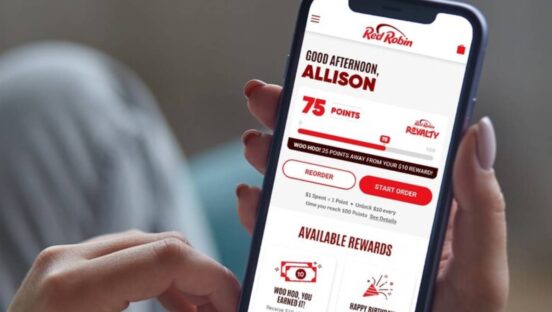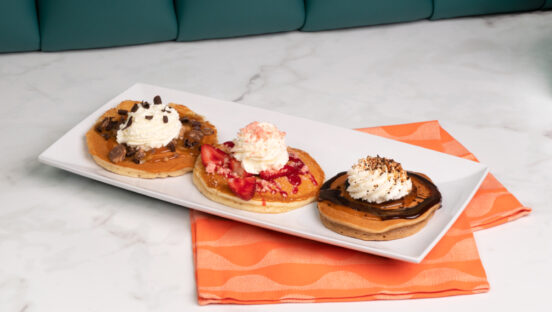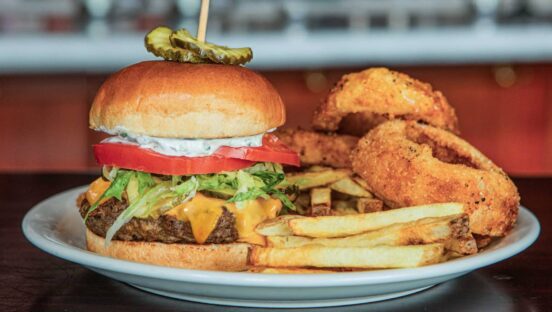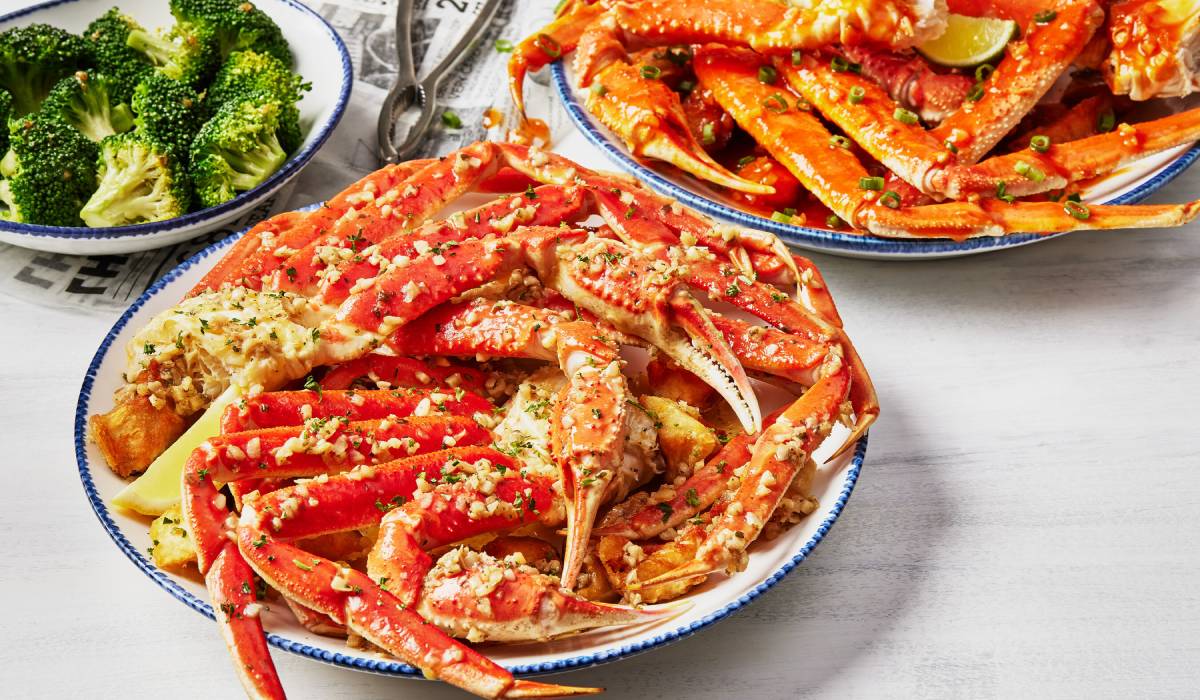Smokey Bones’ transformation is now officially underway.
Last fall, FAT Brands announced it purchased the barbecue chain for $30 million, with plans to convert about two-thirds of the roughly 60-unit footprint into Twin Peaks.
The first will come in Lakeland, Florida, in partnership with DP3 Architects, a firm that’s worked with the sports bar on new prototypes for the past six years. The two sides are partnering to completely renovate a 7,082-square-foot Smokey Bones, which will include an 884-square-foot addition and raised dining room extension. The revamp will also feature new exterior finishes, including the relocation of the front entrance to help with visibility and accessibility, the add-on of a lodge-inspired entry tower, a second bar, updated furniture, wall treatments, custom ceiling installations, revitalized kitchen facilities, and enhanced restrooms.
FAT Brands expects several of these conversions to take place in 2024, with most coming in 2025 and 2026. Chairman Andy Wiederhorn expects each redesign to take between 120 to 150 days. Florida is home to some of Twin Peaks’ highest-volume restaurants that earn between $9 million and $14 million. Systemwide, AUV is around $6 million—the best in FAT Brands’ entire portfolio.
The conversions are a way to accelerate growth for what is indisputably the restaurant group’s hottest concept. In Q1, Twin Peaks opened three restaurants in Mexico, Ohio, and Florida; two more are scheduled for Naples, Florida, and Rock Hill, South Carolina, in the second quarter. By year-end, the casual-dining chain expects 15 to 18 openings and to finish with roughly 125 stores. If accomplished, it would represent a 51 percent growth in unit count since FAT Brands bought the company three years ago.
READ MORE:
FAT Brands’ Growing Empire Searches for Even Higher Peaks
Why Twin Peaks Conversions Make Sense for FAT Brands
The roadmap is strong, and not just because of Smokey Bones conversions. The pipeline features 125-plus franchise deals that should be fulfilled over the next five years. That should grow Twin Peaks’ systemwide sales to about $1 billion and increase the mix of franchise locations to 75 to 80 percent.
All of this growth coincides with Twin Peaks’ upcoming IPO, which should help FAT Brands pay down debt related to previous acquisitions. The chain announced that it confidentially filed an IPO on Tuesday.
“Twin Peaks continues to produce industry-leading economics and has a deep pipeline of profitable growth, making this a strong move, for both the brand and FAT Brands as a whole,” Wiederhorn said during FAT Brands’ Q1 earnings call.”
Although a good chunk of existing Smokey Bones stores will disappear in the next few years, that still leaves FAT Brands with roughly 40 restaurants to play with—and high-performing ones at that. The barbecue concept has an AUV exceeding $3 million, and that’s second only to Twin Peaks in the FAT Brands portfolio. So in markets where a Twins Peaks conversion doesn’t make sense (there’s already a Twin Peaks nearby, landlord restrictions on how much alcohol can be sold, etc.), the company will push for Smokey Bones’ growth.
In its heyday, the brand had about 120 restaurants.
“We really want to grow that brand. It’s a great brand. It’s great food. It used to be 120 units. Our franchise sales team is in the thick of it to get that brand ready for franchising, whether we refranchise existing company-owned stores that we retain or whether we just sell new stores, all of that is in the works,” Wiederhorn said.
Smokey Bones should increase FAT Brands’ annual adjusted EBITDA by approximately $10 million net of any conversions to Twin Peak restaurants.
FAT Brands could potentially add more concepts to its portfolio. Wiederhorn said the company is looking at opportunities that “add significant strategic value similar to how we bought Smokey Bones” to accelerate growth at Twin Peaks. The other plan is to acquire chains that help FAT Brands boost capacity of its pretzel and cookie dough manufacturing facility. The restaurant group did this with Nestle Toll House Cafe, which was converted into Great American Cookies. The factory is at 45 percent capacity; the idea is that more production means more EBITDA and a greater ability to pay off debt.
Overall, FAT Brands has 18 concepts spanning over 2,300 locations worldwide, across more than 40 countries and 49 U.S. states or U.S. territories. In total, the company projects between 125 and 150 new units this year, a potential 20 percent increase from 2023. FAT Brands currently has a pipeline of over 1,100 stores. This expansion should result in $50 million to $60 million in incremental adjusted EBITDA, which should help the brand organically delever its balance sheet.










